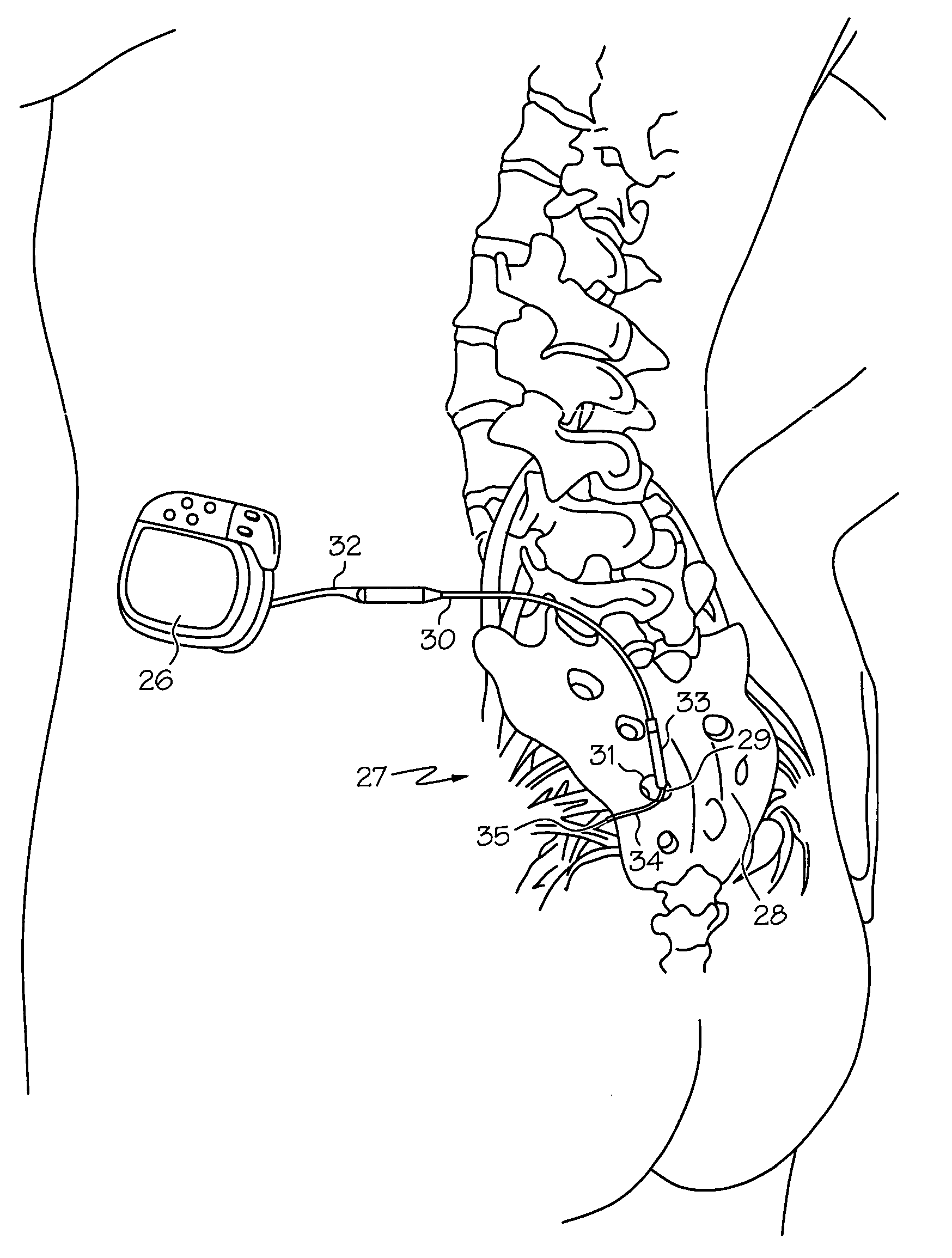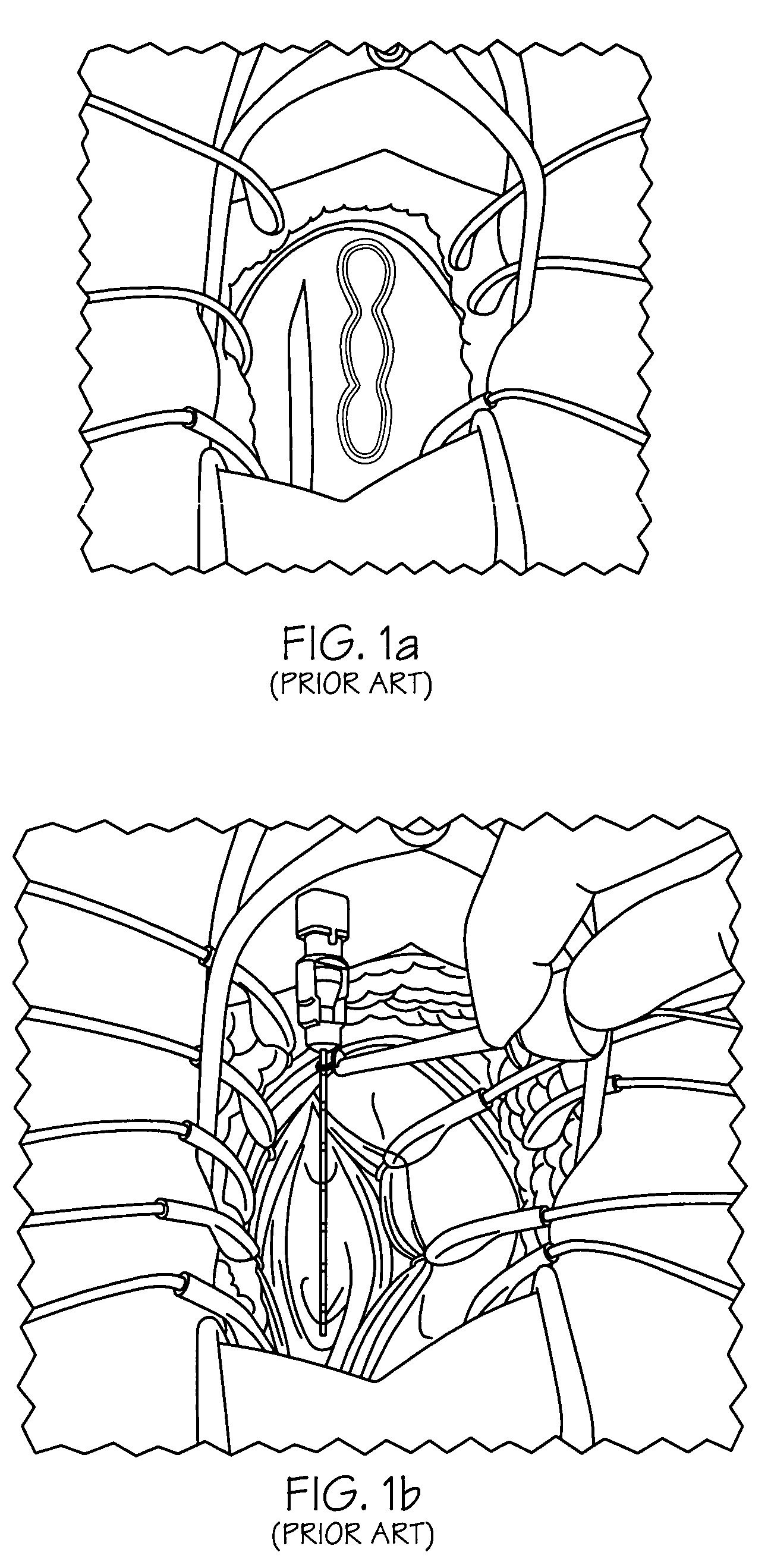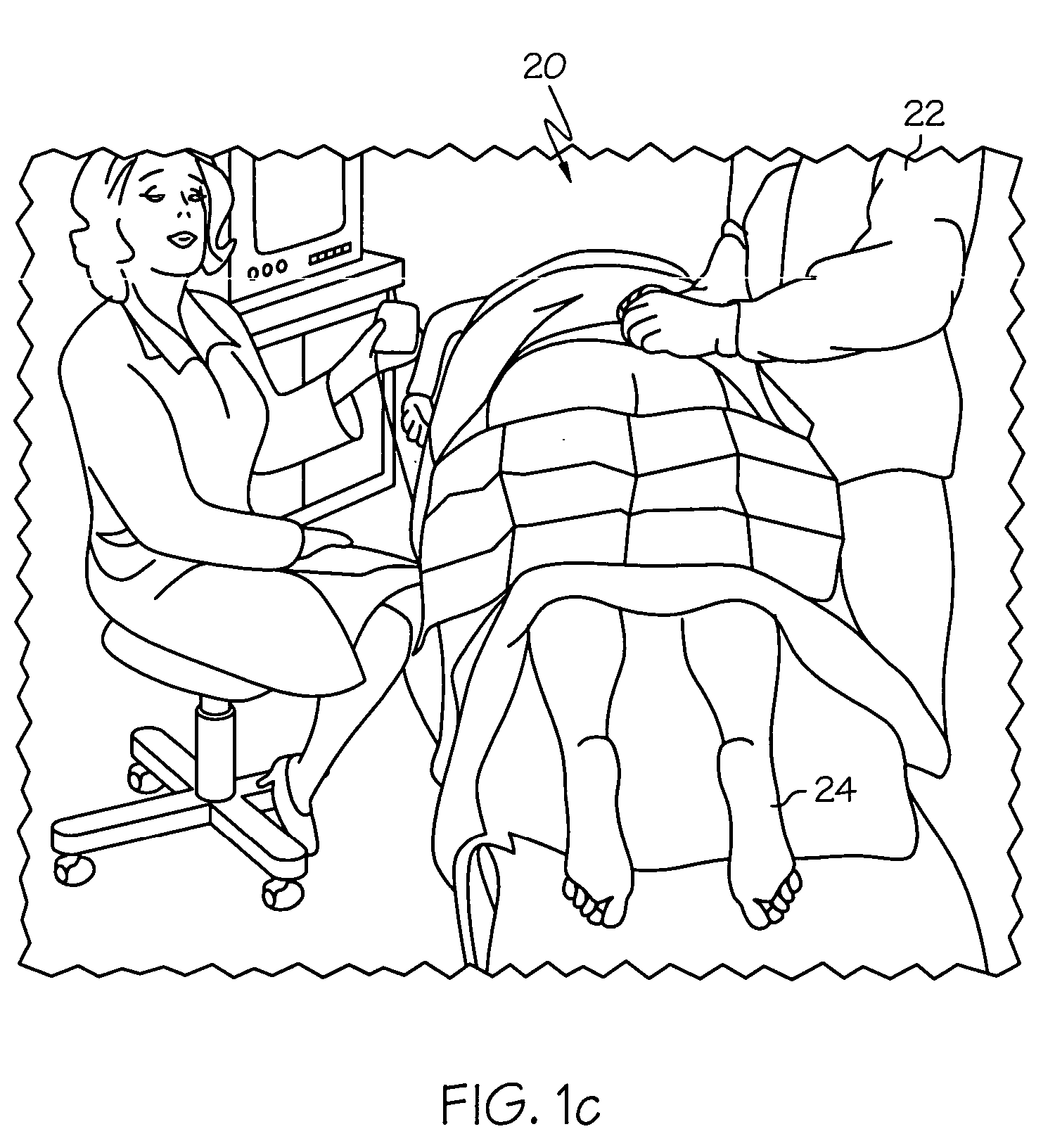Minimally invasive apparatus for implanting a sacral stimulation lead
a technology of sacral stimulation and minimal invasive equipment, which is applied in the direction of spinal electrodes, internal electrodes, therapy, etc., can solve the problems of affecting the health and quality of life of millions of people of pelvis, individuals with urinary control disorders often face debilitating challenges in their everyday lives, and achieve the effect of preventing bending
- Summary
- Abstract
- Description
- Claims
- Application Information
AI Technical Summary
Benefits of technology
Problems solved by technology
Method used
Image
Examples
embodiment
Fourth Minimally Invasive Method Embodiment
[0084]FIG. 7a shows a flowchart of a fourth minimally invasive implantation method embodiment 82, and FIGS. 7b-7g show various implementation element embodiments. The fourth minimally invasive method embodiment 82 is similar to the second minimally invasive method embodiment 74 with the exception that a guide wire 44 or stylet is inserted 78 to guide the stimulation lead 30 and the stimulation lead 30 functions as the dilator 42, so a separate dilator 42 is not used. More specifically, after the incision 68 is created 62, a guide wire 44 is inserted 78 into the needle. Once the guide wire 44 is in the desired location 35, the needle 36 is removed 56 from the insertion path 33. In one embodiment, the stimulation lead 30 is configured with a centrally located stylet lumen and a pointed tip, so the stimulation lead 30 can serve as the dilator 42. The stimulation lead 30 stylet lumen is inserted 58 over the guide wire 44 and the stimulation lea...
PUM
 Login to View More
Login to View More Abstract
Description
Claims
Application Information
 Login to View More
Login to View More - R&D
- Intellectual Property
- Life Sciences
- Materials
- Tech Scout
- Unparalleled Data Quality
- Higher Quality Content
- 60% Fewer Hallucinations
Browse by: Latest US Patents, China's latest patents, Technical Efficacy Thesaurus, Application Domain, Technology Topic, Popular Technical Reports.
© 2025 PatSnap. All rights reserved.Legal|Privacy policy|Modern Slavery Act Transparency Statement|Sitemap|About US| Contact US: help@patsnap.com



